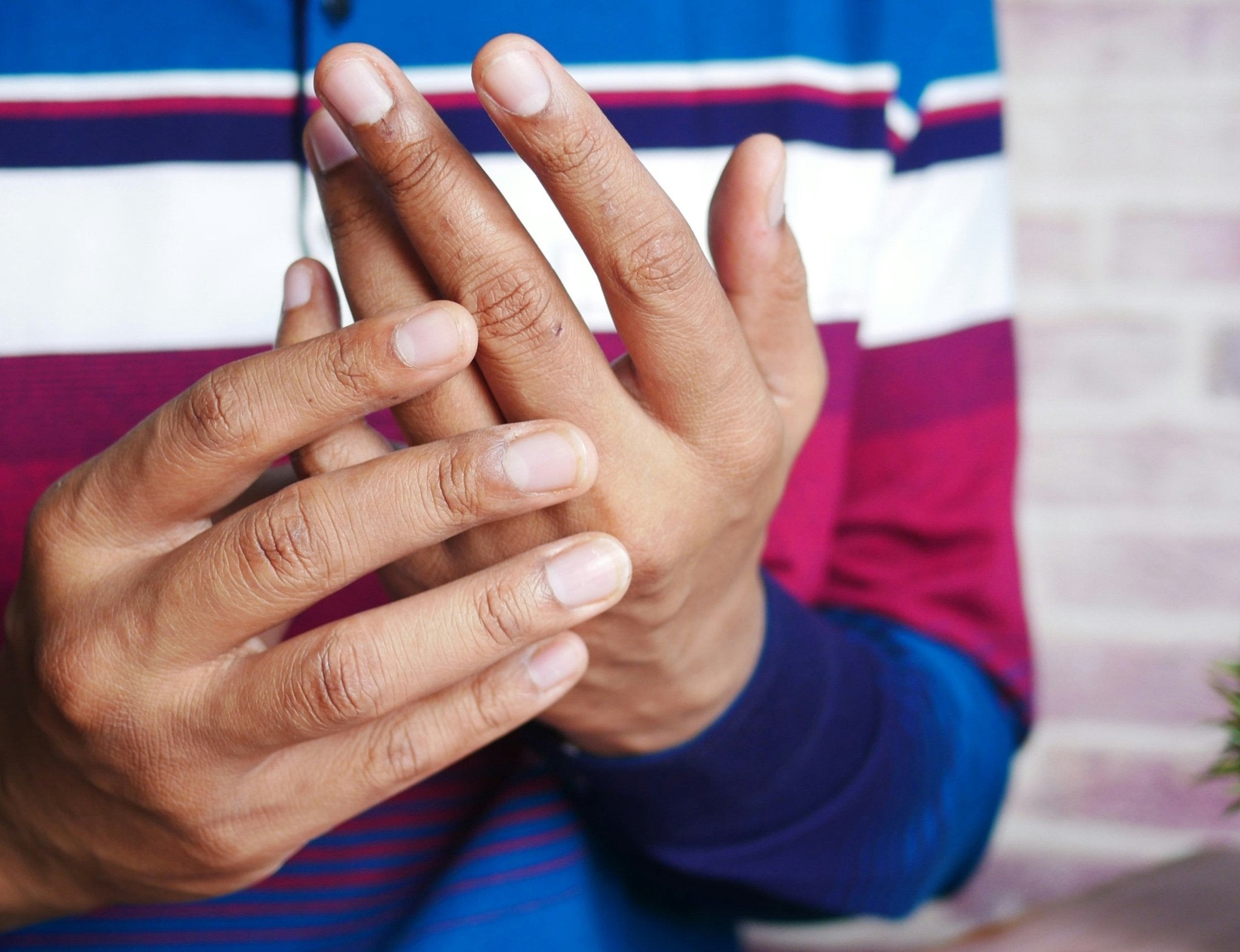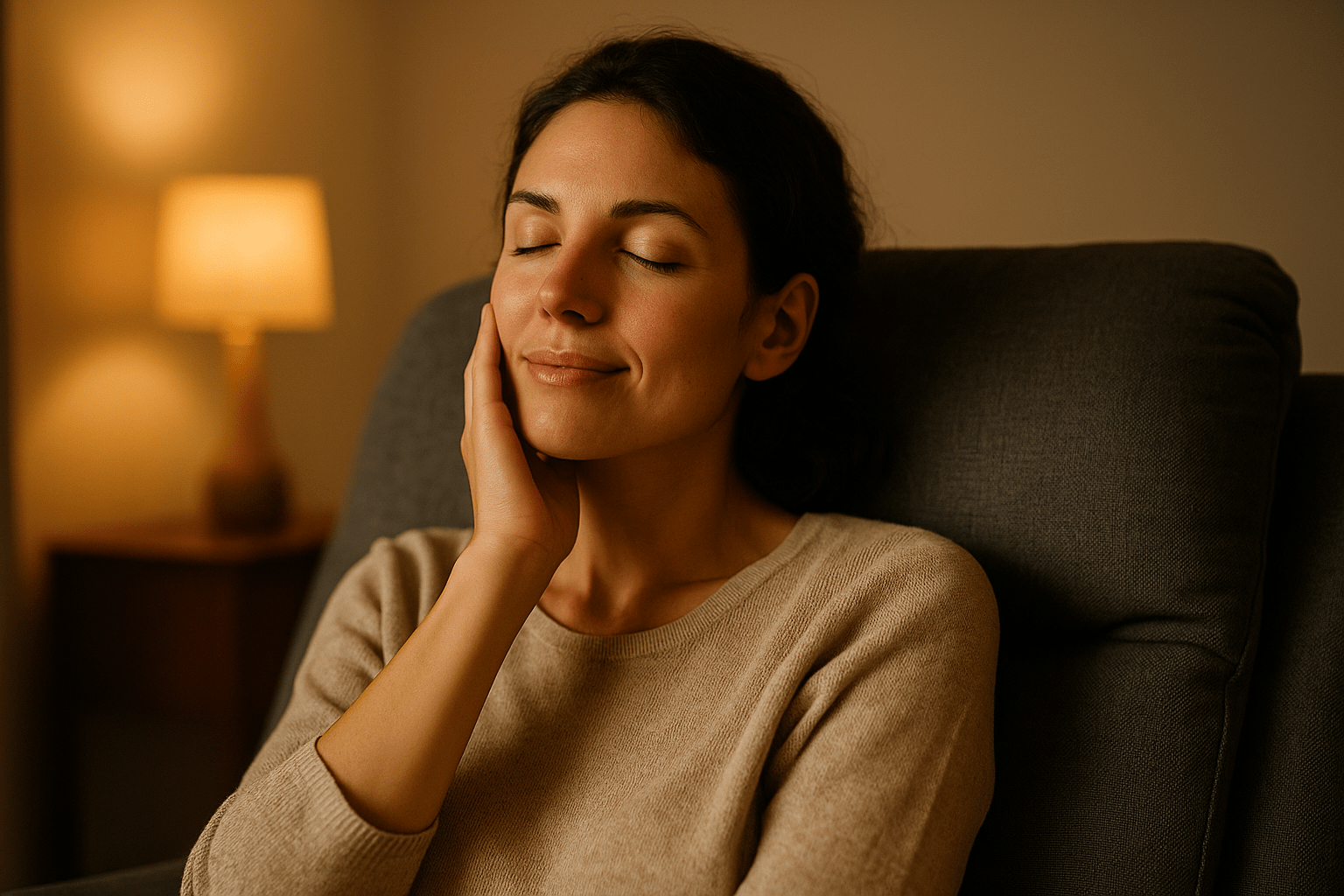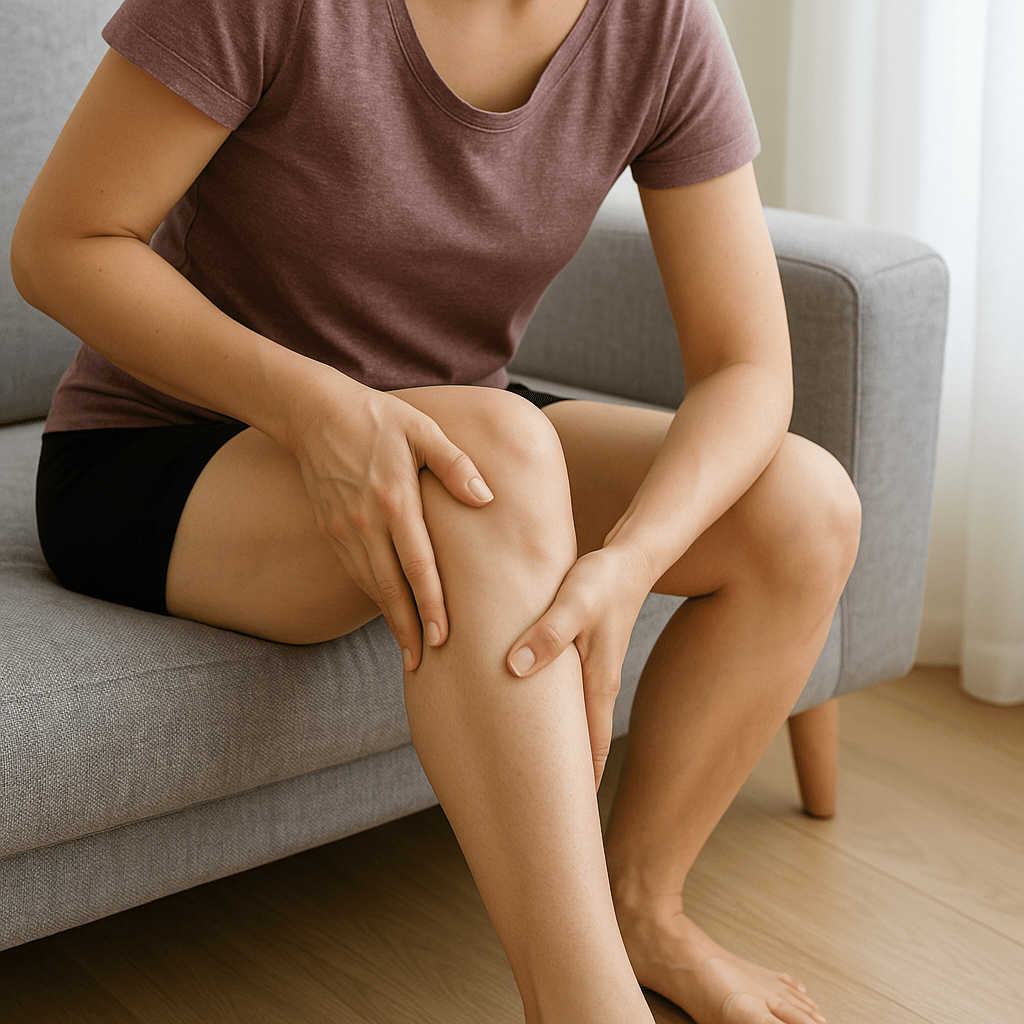Rheumatic pain: how massages can help relieve it
Almost everyone has heard the term "rheumatism". Most people have a rough idea of what this disease is about. The basic assumption that rheumatism causes pain is not wrong at first. However, it is actually a disease that is often misunderstood and about which there are many misconceptions that date back to ancient times. The word "rheumatism" originally comes from the Greek and means river or current. The underlying idea behind the name of the disease stems from the idea of incorrectly composed bodily fluids in the body, for example in joints and organs, which lead to a build-up of fluid and thus to a...


Almost everyone has heard the term "rheumatism". Most people have a rough idea of what this disease is about. The basic assumption that rheumatism causes pain is not wrong at first. In fact, however, it is a disease that is often misunderstood and about which there are many misconceptions that date back to ancient times.
The word "Rheumatism" originally comes from the Greek and means flow or current. The idea behind the name of the disease stems from the idea of incorrectly composed body fluids in the body, for example in joints and organs, which lead to a build-up of fluid and thus to painful inflammation. But it is not quite as simple as that, which is underlined by the fact that rheumatism can occur in over 100 different forms.
In this article, we look at the symptoms and causes of rheumatism. We also explain what treatment options are available and how massages can be used specifically against rheumatic pain and help to relieve it.
Reading tip: You can get a deeper insight into the various effects of massages, including for rheumatic pain, in our article "From head to toe - massages help here".
Rheumatism: pain and other symptoms
Rheumatism is often used as an umbrella term for various diseases that primarily affect the joints, but can also affect the connective tissue and muscles.
The most common form of rheumatism is rheumatoid arthritis, a chronic inflammatory disease that leads to painful swelling and loss of function in the affected joints. Contrary to the widespread assumption that rheumatic pain is age-dependent, it can affect anyone, regardless of age.
The exact cause is often unclear, but it is assumed that genetic factors and a misdirected immune system play a role. More clarity and targeted treatment steps can be achieved by differentiating the condition from similar diseases with often similar symptoms. These include diseases such as osteoarthritis or fibromyalgia, which is often incorrectly referred to as soft tissue rheumatism.
Reading tip: In our article on possible causes of joint pain you can find out more about osteoarthritis and how to alleviate the associated symptoms.
Rheumatism or osteoarthritis? The differences at a glance
Although rheumatic pain and osteoarthritis pain have similar and other symptoms, they are different diseases. Rheumatism, in particular rheumatoid arthritis, is an autoimmune disease in which the immune system mistakenly attacks healthy tissue. Osteoarthritis, on the other hand, is a degenerative joint disease caused by the breakdown of cartilage in the joint.
While rheumatism often causes pain due to swelling and inflammation, osteoarthritis focuses on the wear and tear of the joints. It is important for healthcare professionals to know the differences in order to ultimately choose the right form of treatment. For this reason, it always makes sense to consult your doctor to clarify the exact cause if you suspect you have symptoms.
Reading tip: If you suffer from osteoarthritis, you will find useful information in our article, how massages can help with osteoarthritis pain.
What are the possible causes of rheumatic pain?
In fact, the exact causes of rheumatism and pain have not yet been fully researched. Experts suspect a combination of genetic factors, environmental factors and a misdirected immune system.
Genetic predispositions can increase the risk of developing rheumatism, while certain infections or environmental factors can act as triggers. The immune system mistakenly attacks its own tissue, which leads to the typical inflammation and pain. Hormonal changes and stress can also play a role and exacerbate the symptoms.
The course of rheumatism and its consequences
Rheumatism is usually chronic and relapsing. This means that the symptoms occur at irregular intervals and can vary in intensity. For example, rheumatism causes muscle pain in the legs.
Over time, it does not stop at rheumatic pain - it can lead to permanent damage to joints, bones and connective tissue. In addition to the joints, other organs such as the heart, lungs or eyes can also be affected. Rheumatism can also damage the blood vessels, leading to an increased risk of heart attacks and strokes.
If left untreated, this condition can significantly impair quality of life and lead to permanent disability. Early and continuous treatment is therefore crucial for the long-term well-being of those affected. A certain amount of education and awareness of the issue is therefore required.
Symptoms of rheumatoid arthritis: how to recognize rheumatic pain
The less good news is that the symptoms of rheumatoid arthritis are varied and can differ from person to person. However, there are typical signs of rheumatism such as pain and swelling in the joints, especially in the hands, fingers and feet. The affected joints are often warm and reddened. Morning stiffness that lasts longer than 30 minutes is another characteristic symptom.

Source: https://www.therapie-rheuma.de/patient/rheumatoide-arthritis/krankheitsverlauf-rheuma-schmerzen-und-entzuendung
But rheumatism is more than "just" pain. In addition to joint symptoms, general complaints such as fatigue, fever and weight loss can also occur. In some people, internal organs are also affected, which can cause additional symptoms.
As you can see, many of the signs are quite common complaints in themselves, from which false conclusions could be drawn very easily. Medical tests are needed to obtain a clear diagnosis.
Diagnosis of rheumatism: which tests are necessary?
In order to find out what helps against rheumatism and the pain, the disease must first be precisely identified. Rheumatoid arthritis is diagnosed using a combination of clinical examinations, laboratory tests and imaging procedures. The doctor first carries out a thorough medical history and physical examination, during which she looks for typical symptoms such as swelling and restricted movement. This is followed by imaging procedures and a blood test.
- Blood test: This can provide evidence of inflammation and specific antibodies (e.g. rheumatoid factor or anti-CCP), which are often elevated in rheumatoid arthritis.
- Ultrasound: An ultrasound can be used to visualize inflammatory changes in the joints. This method is particularly useful for monitoring the progression of the disease.
- MRI: An MRI (magnetic resonance imaging) provides detailed images of the joints and can detect even the smallest changes that indicate rheumatoid arthritis. It also helps to assess the extent of the damage and plan the best therapy.
Rheumatic pain: what helps?
The treatment of rheumatoid arthritis aims to control inflammation, relieve pain and maintain joint function.
What helps against rheumatic pain? The following therapeutic approaches are frequently used:
- Drug therapy: Anti-inflammatory drugs and so-called DMARDs (disease-modifying antirheumatic drugs) relieve rheumatic pain and slow down the progression of the disease.
- Anti-inflammatory diet: A balanced diet rich in omega-3 fatty acids and antioxidants can reduce inflammation in the body and relieve the pain of rheumatism. Meat should only be consumed rarely as it contains inflammation-promoting arachidonic acid.
- Exercise: Regular, gentle exercise helps to keep the joints flexible and strengthen the muscles. Physiotherapy exercises improve joint mobility and train the surrounding muscles.
- Physiotherapy/manual therapy and occupational therapy: These therapies support the mobility and function of the joints and help to cope better with everyday activities.
- Cold and heat therapy: They can relieve rheumatic pain and improve circulation. For example, the use of cooled or warmed rapeseed in the hands can provide relief.
- Surgery: In severe cases of rheumatism, surgery may be necessary to repair or replace damaged joints.
- Pain therapy: As with all pain disorders, the holistic approach is also is also an important part of treatment for rheumatic pain in order to improve quality of life.
Reading tip: Even with symptoms that are not so easy to eliminate, it is possible to live with few restrictions and far less pain, even with rheumatism. You can find out how this works in our article on pain management.
Massage for rheumatism
Once rheumatism has been diagnosed, the next step is for doctors to draw up a treatment plan. A massage for rheumatism can be an effective addition to the treatment of pain. Its effect is based on promoting blood circulation, relieving muscle tension and thus increasing general well-being. The following also applies here: always clarify the details of any accompanying treatment with massage with your healthcare professional.
A basic distinction is made between medical massages and wellness massages, whereby the former can also be prescribed by a doctor.
- Specific medical massages for rheumatic pain: There are certain types of massage that can be particularly helpful. These include
- Classic massages: They relax the muscles and improve circulation.
- Connective tissue massages/reflexology treatment: These massages target deeper layers of tissue and can effectively relieve rheumatic pain.
- Underwater massages: The combination of water and massage is particularly gentle on the joints and beneficial.
- Lymphatic drainage: This technique helps to reduce swelling and improve lymph flow. In our article "The silent flow inside you: how manual lymphatic drainage improves your well-being" you can find out more about this surprisingly simple technique and how it actually works.
- Wellness massages for general well-being: In addition to medical massages, wellness massages can also be beneficial for rheumatic pain by increasing well-being and reducing stress.
Massages offer a versatile way of alleviating the pain of rheumatism and making the daily lives of those affected more pleasant. If nothing stands in the way of massages as an accompanying treatment from a medical point of view, regular use can create much more pleasant conditions.
Massage and rheumatism: massage chair as a supplement to traditional massage
A massage chair can offer considerable benefits, especially for people with chronic complaints such as rheumatic pain. One of these is the convenience of being able to enjoy regular massages in the comfort of your own home, without having to book appointments or make stressful journeys. The opportunity to relieve the pain of rheumatism is just a few meters away, exactly when you need it.
Modern massage chairs are also capable of various massage techniques that are specifically designed to help relieve pain and improve circulation. Some models even offer infrared heat treatments, which can be particularly beneficial for rheumatic pain. Another great advantage of massage chairs is that you can try out different forms of massage and find the method that suits you best.
Reading tip: More about the medical benefits of massage chairs in our article.
Find your own individual way to relieve rheumatic pain
Rheumatism in its many forms can be a major challenge for sufferers, but there are many ways to alleviate it. Active treatment, exercise and massage, including massage chairs, play an important role. Also remember to always seek medical advice to find the best treatment methods for you.
With the numerous symptoms of rheumatism ranging from pain and swelling to morning stiffness, the path to diagnosis can often take longer than you would like, but the journey via blood tests, ultrasound and MRI is worth it. The treatment options are also varied and range from medication, an anti-inflammatory diet, regular exercise and various massage techniques to the use of massage chairs.
With the right combination of therapies and support, you can significantly improve your quality of life, even with rheumatism. Put aside the ancient concept of rheumatism and put your trust in modern medicine. Make use of complementary treatments such as massages to alleviate your symptoms and actively take your well-being back into your own hands.
Cover picture: Towfiqu barbhuiya

Co-founder and Managing Director of Massage Chair World. With his expert knowledge and industry expertise, he helps private individuals and companies to find the right massage chairs for relaxation, health and vitality. The individual expert advice is provided both by telephone or video chat, as well as in the exhibition outside Stuttgart.




